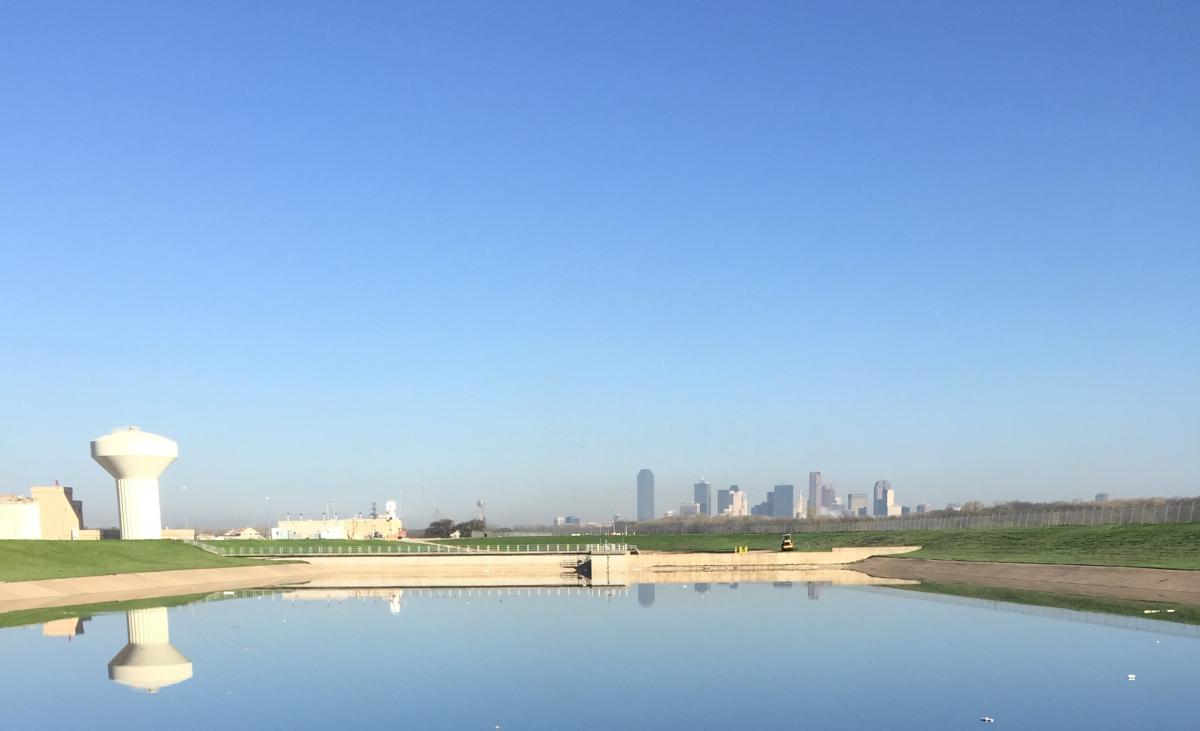EPA’s Blending Policy: Clear As Mud?
With record rainfalls increasing pressure on water resource recovery facilities, the debate on peak flow blending in separate sanitary sewer systems lingers.
What is blending and what is it not?
Blending is not bypass. Bypass is the unpermitted, intentional diversion of waste streams from any portion of treatment facility and direct discharge of those streams to the environment. Bypass is prohibited unless unavoidable to prevent loss of life, personal injury, severe property damage or if there is no other feasible alternative.
Blending is the permitted and engineered channeling a portion of the peak wet weather flow through a non-biological treatment unit and the subsequent re-combining, or “blending”, of the treated peak wet weather flows with the final effluent flow from biological secondary process before disinfection and discharge. The final effluent must meet all National Pollutant Discharge Elimination System (NPDES) permit requirements. In a blended flow treatment plant, all flows are treated and meet permit, but not all flows go through biological treatment. This process protects the biological secondary treatment system from washout, which could result in discharge of non-compliant effluent to the environment, thus better protecting the receiving stream.
EPA’s stance on blending
The Environmental Protection Agency (EPA) is expected to make a final ruling on its revised blending policy by fall 2020, clearing up a muddy stance since 2005. Prior to 2003, EPA had not provided clear direction on the prospect of peak flow blending. In 2003, EPA released a policy allowing blending if approved through the NPDES permitting process; however, the agency quickly rescinded that policy in 2005 and declared that blending was not allowed regardless of whether the final effluent would meet permit requirements.
In March 2013, the U.S. 8th Circuit of Appeals ruled that blending is not equal to prohibited bypass as interpreted by EPA’s 2005 policy revision. Under this ruling, the use of non-biological secondary treatment of peak flow and subsequent blending is legal. However, EPA has determined that the ruling applies only to states in the jurisdiction of the 8th Circuit, which is comprised of Arkansas, Iowa, Minnesota, Missouri, Nebraska, North Dakota and South Dakota. While EPA has not appealed the 8th Circuit decision, any final rulemaking on blending has been in limbo since 2013.
Arguments for and against blending

Opponents argue that blending undermines the incentive to reduce infiltration and inflow (I&I) in collection systems. They also contend it puts public health at greater risk. However, the likelihood of non-compliant permit discharges from conventional activated sludge plants (the vast preponderance of treatment plants in the U.S. are activated-sludge based) is actually elevated during extended wet weather events.
Additional studies are needed to compare treated blended flow during wet weather with discharge of non-blended flows from plants that would typically incur some level of secondary washout in severe wet weather. However, compliance with NPDES permit conditions can be more consistently achieved for many facilities if blending were introduced.
Looking Ahead
Looking at the previous rollercoaster and debate, a lot is still to be determined. However, early indications are that EPA may indeed allow some level of separate peak flow treatment and blending of flows in the new policy. If so, the new policy would likely:
- Provide clarification on the definition of bypass and blending
- Allow blending of peak flows in sanitary sewer systems with proper treatment technologies required for all flows
- Require full disinfection for the combined, blended flow
- Blended effluent must limit all final NPDES permit limits. Permit limits for blended effluent plants may be stricter than for plants with full secondary treatment of all flows
- Compliance will be measured at final outfall and not at any point within the treatment plant (internal outfalls will likely not be required)
How can Freese and Nichols help?
Freese and Nichols has extensive experience in wet weather modeling/sizing of collection and treatment systems, the design of wet weather management and storage systems for plants, treatment plant process modeling and design, NPDES permitting, and coordination with state and regulatory agencies on plant design and permit conditions. If your plant is experiencing issues related to wet weather management including sanitary sewer overflows (SSOs), treatment plant hydraulic and process capacity limitations, permit compliance or regulatory coordination, our experts can help you navigate these challenges and identify solutions that provide best economy for your system and your needs.


